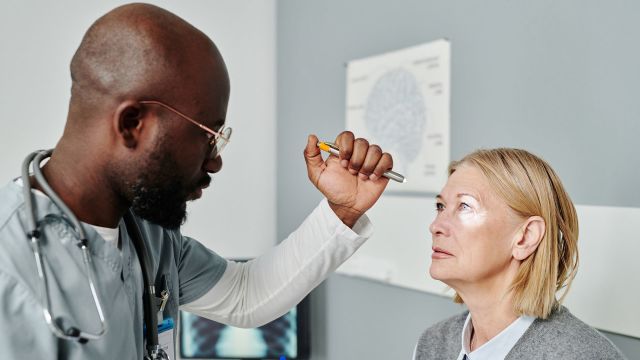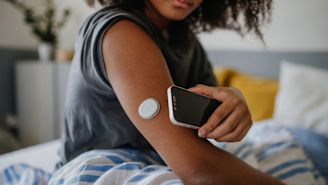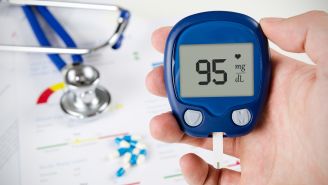Updated on March 21, 2024.
Retinopathy refers to damage to the retina, the layer of light sensitive cells located in the back of the eyeball. Diabetic retinopathy is damage to the retina caused by having diabetes.
Diabetic retinopathy affects many people with diabetes, including people who have type 1 diabetes (when your body does not make insulin, the hormone that helps sugar enter your cells from your bloodstream), people who have type 2 diabetes (when your body no longer responds well to insulin), and people who have gestational diabetes (diabetes during pregnancy).
People who have early stages of diabetic retinopathy may have no symptoms or may only have mild symptoms. People who have the more advanced stages of diabetic retinopathy are likely to experience vision problems—and in some cases, vision loss.
Keep reading to learn the difference between early-stage diabetic retinopathy and late-stage diabetic retinopathy, including what is happening in the eye during these stages and the symptoms someone might experience.
Non-proliferative diabetic retinopathy
Diabetic retinopathy can be divided into two broad stages or types—non-proliferative diabetic retinopathy and proliferative diabetic retinopathy.
Non-proliferative diabetic retinopathy (NPDR) is the early stage. It occurs when high blood sugar levels damage and weaken the very small blood vessels (called capillaries) that supply the retina with blood.
When these capillaries become weakened and damaged, small pockets of the capillary walls can bulge outward (these are called microaneurysms). Eventually, these bulges can rupture and leak fluid into the retina (called dot and blot hemorrhages).
When fluid leaks into the retina, it can disrupt the eye’s normal functioning and cause damage to the retina. It can also cause macular edema—swelling of the macula, the retina’s central cluster of light sensing cells that allow you to see objects in front of you.
As the leaked fluid drains away from the eye, it can leave behind deposits of waxy, yellowish residue (these are called hard exudates). Over time, these can clog capillaries, blocking them off completely. These will be visible during an eye exam.
Blockages can also lead to damage on the retina called cotton wool spots, which look like flecks of white paint and can be seen during an eye exam. These can be a sign that NPDR is getting worse.
NPDR can be classified as mild, moderate, or severe depending on the number of microaneurysms, dot-and-blot hemorrhages, and cotton wool spots, and how widely these are spread throughout the eye or eyes.
Proliferative diabetic retinopathy
The advanced stage is called proliferative diabetic retinopathy (PDR). This stage occurs when new blood vessels begin to form inside the retina (called neovascularization).
Neovascularization is the body’s attempt to supply the retina with blood after existing blood vessels have become blocked, and blood flow to the retina has been reduced. The eye releases a protein called vascular endothelial growth factor (VEGF) that stimulates the growth of new blood vessels.
However, these new blood vessels do not function well—they leak, they are easily damaged, and they can form scar tissue that can further damage the eye, which can lead to severe and sudden vision loss.
PDR can be treated with anti-VEGF medications which stop the growth of abnormal blood vessels in the eye. Other treatment options are photocoagulation (laser surgery to seal off leaking blood vessels) and surgery to repair damage to the retina.
While treatment may vary from person to person, good diabetes control and being treated as early as possible are essential for getting the best results from treatment. If you have questions about managing your diabetes, treatment for diabetic retinopathy, and whether your insurance covers, ask your healthcare provider.







